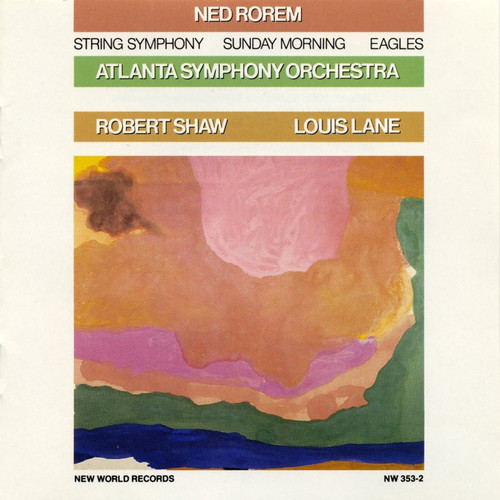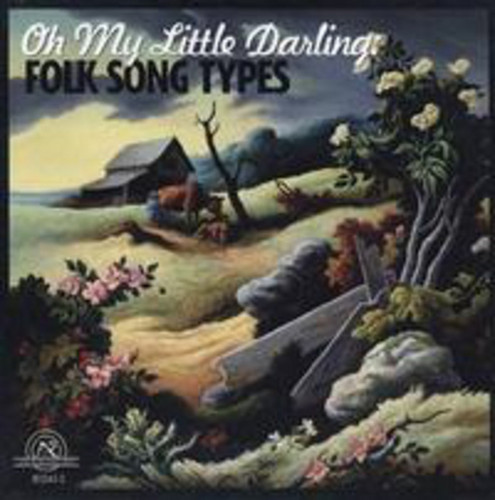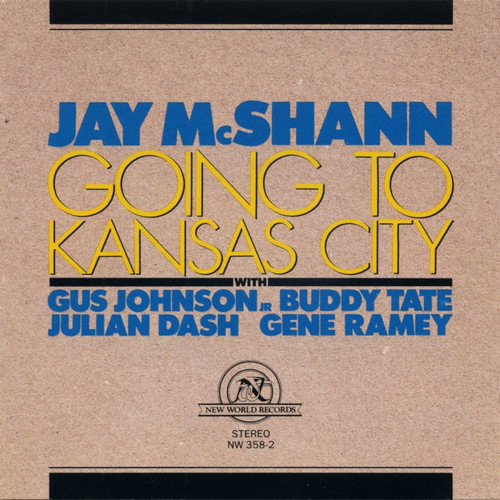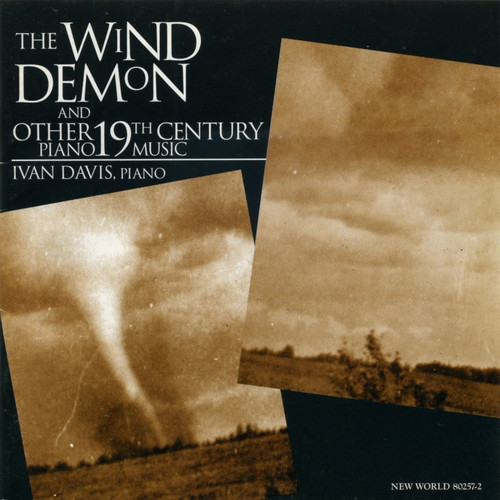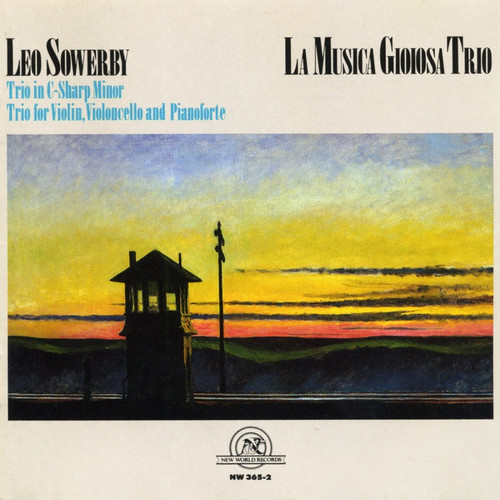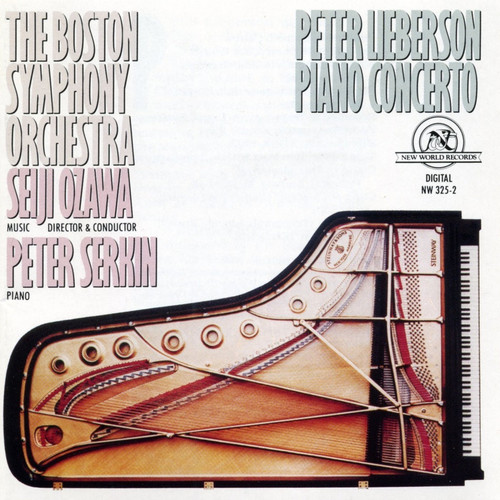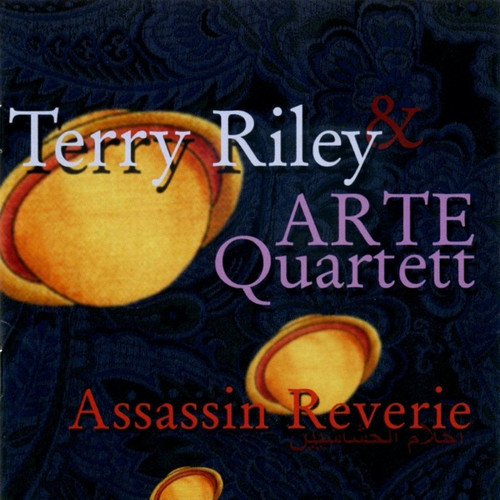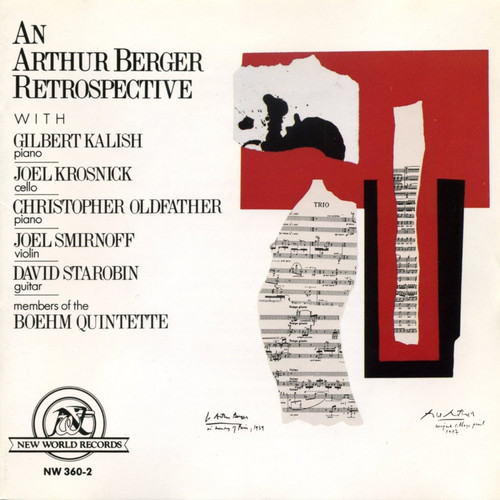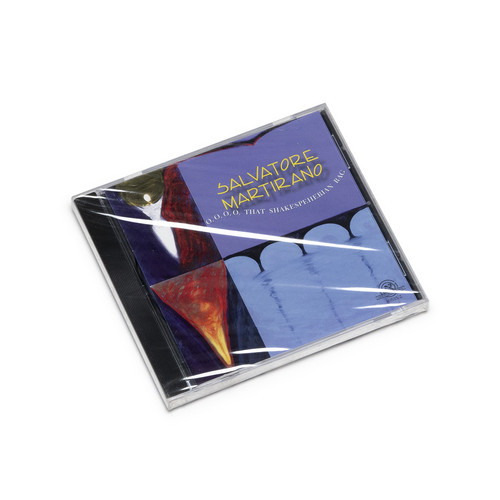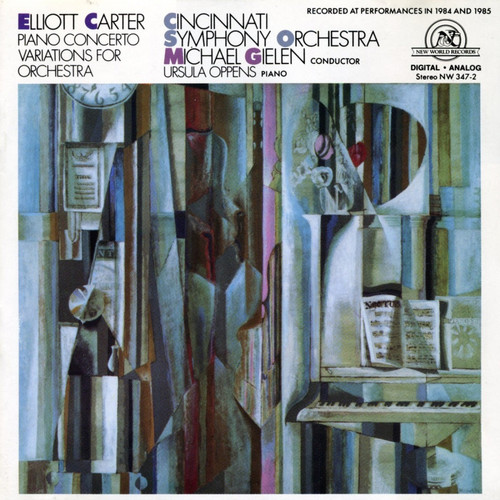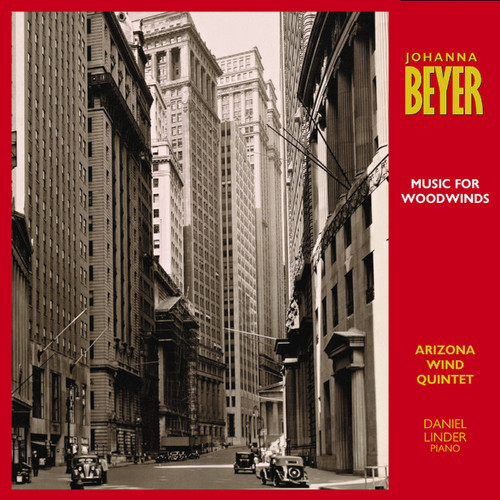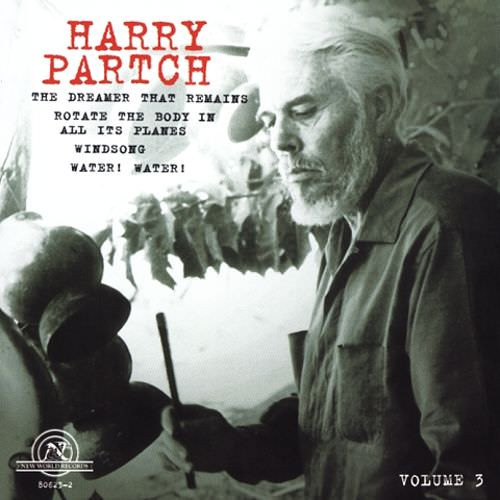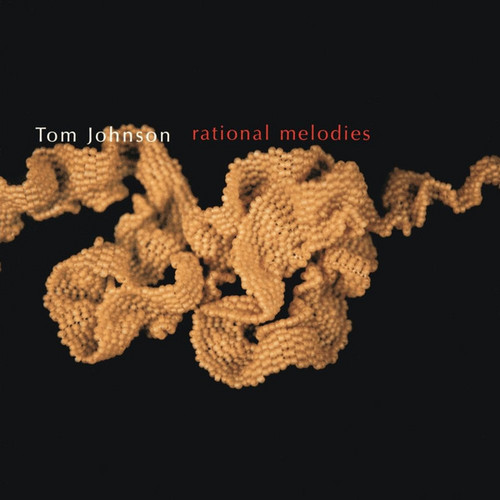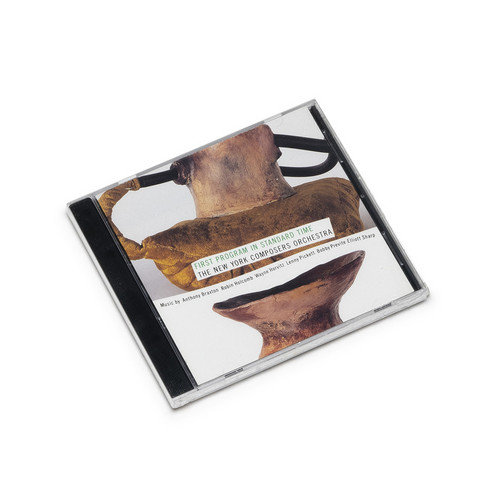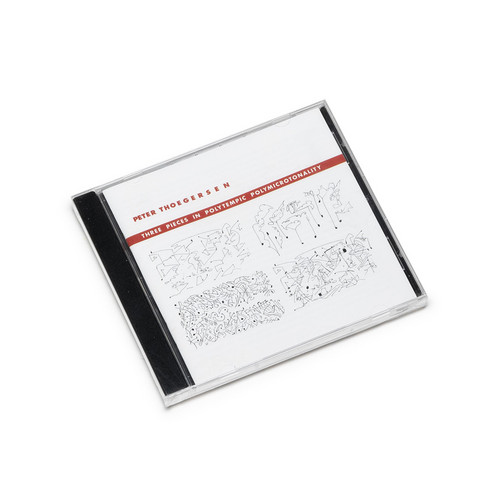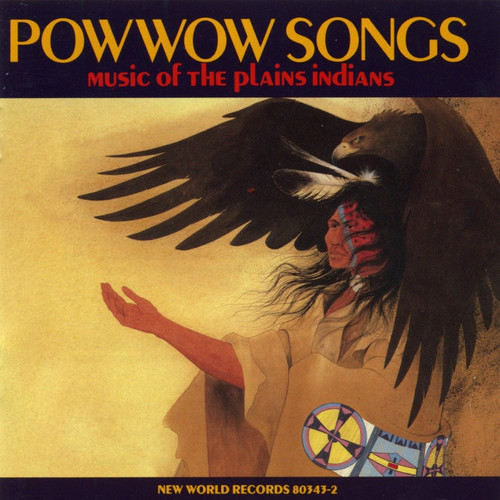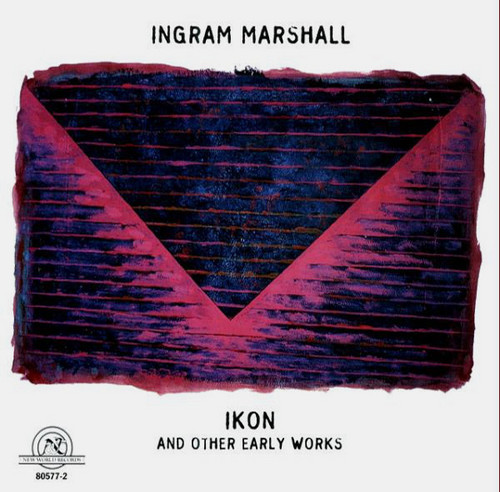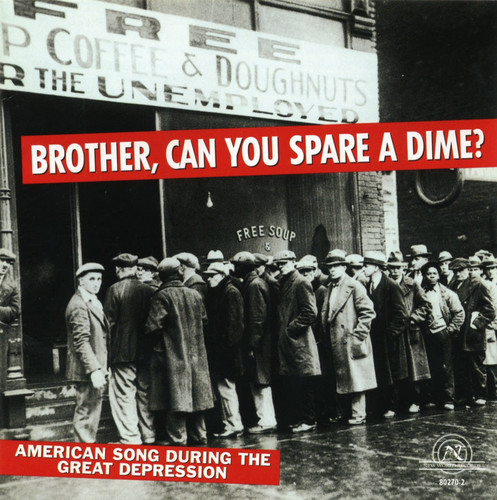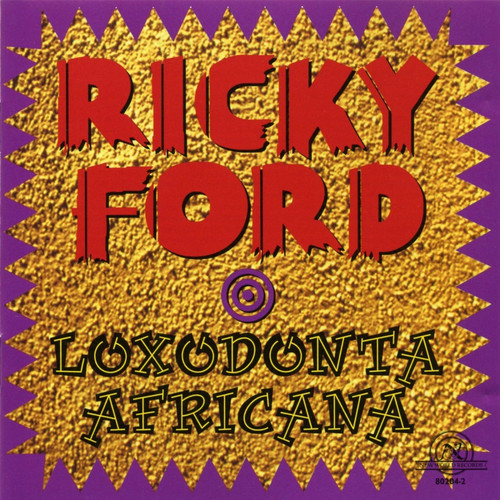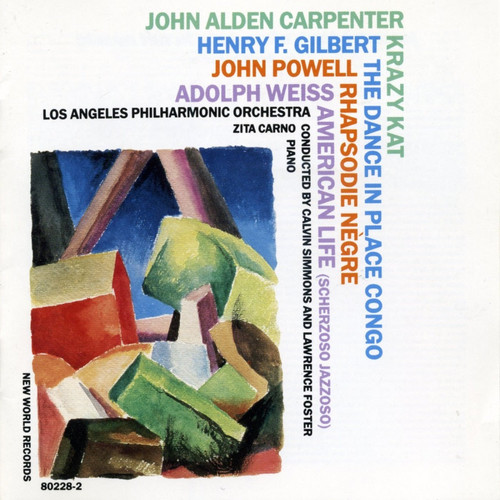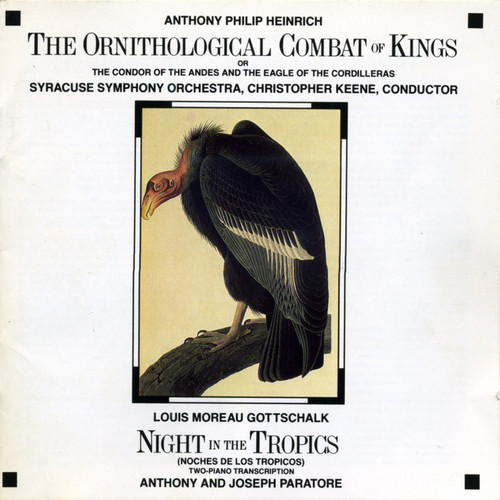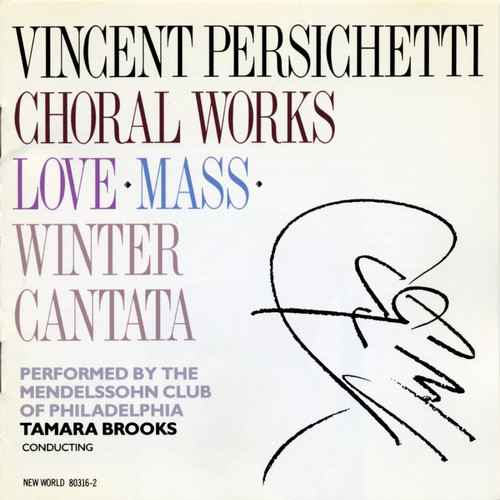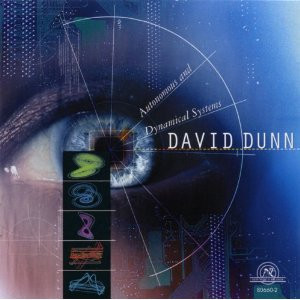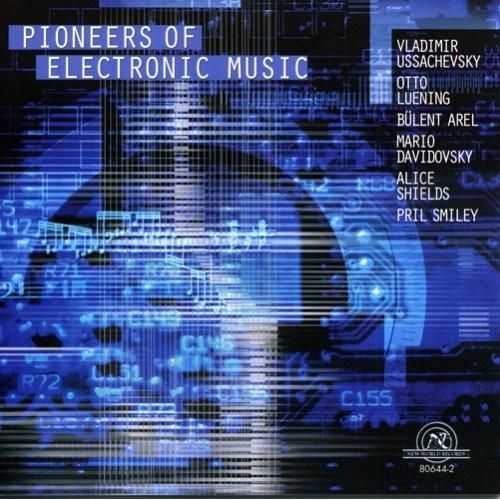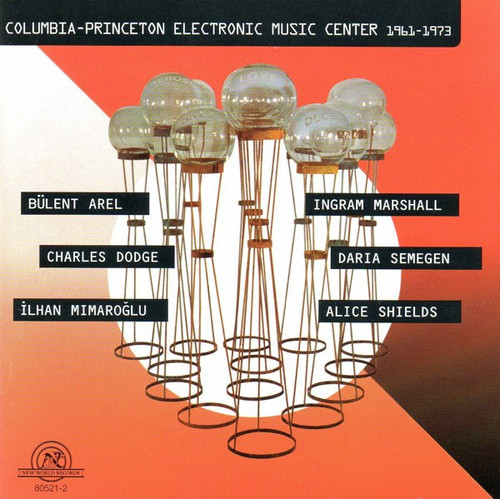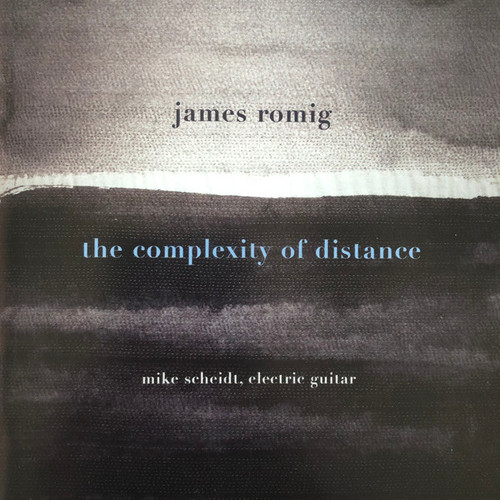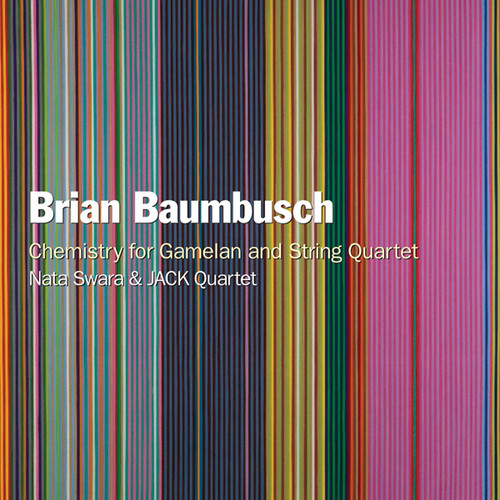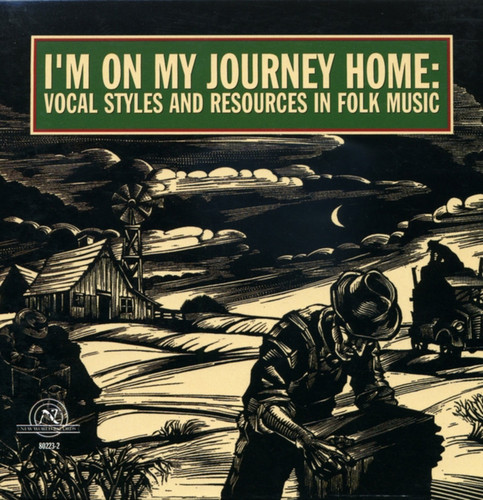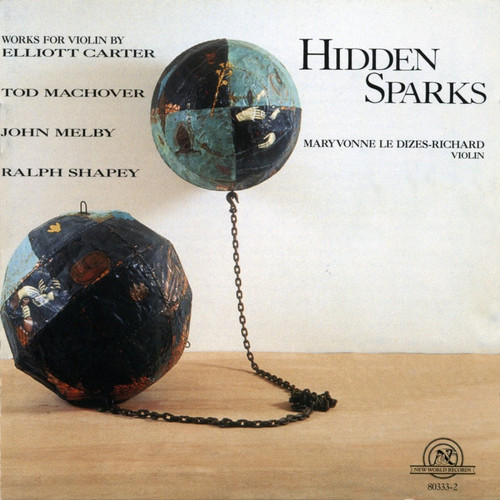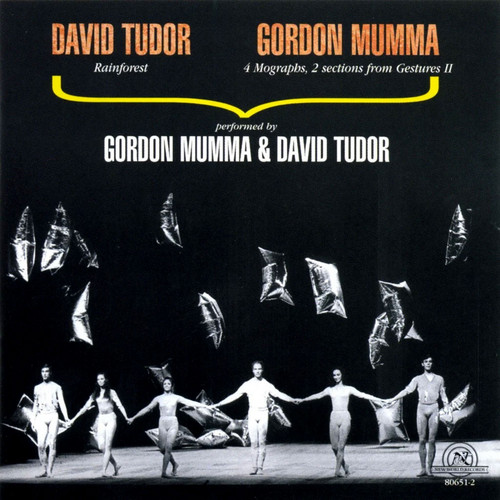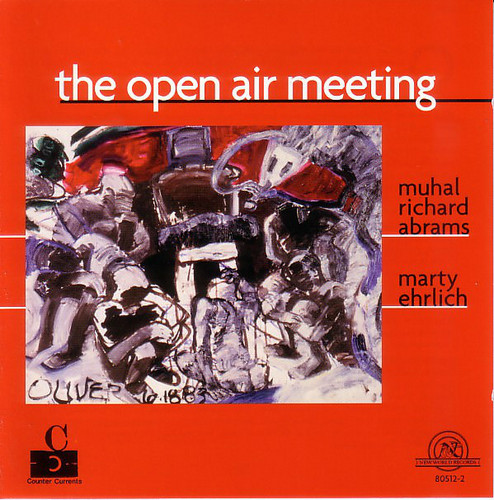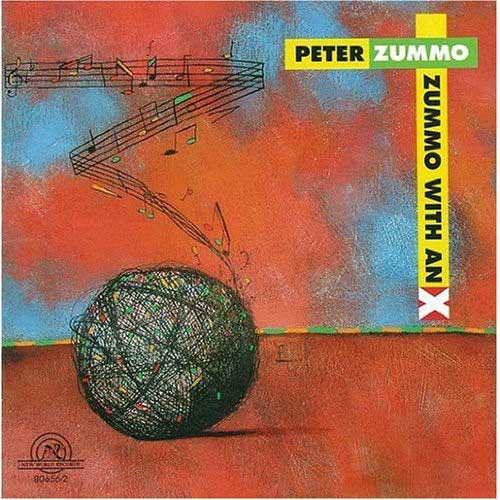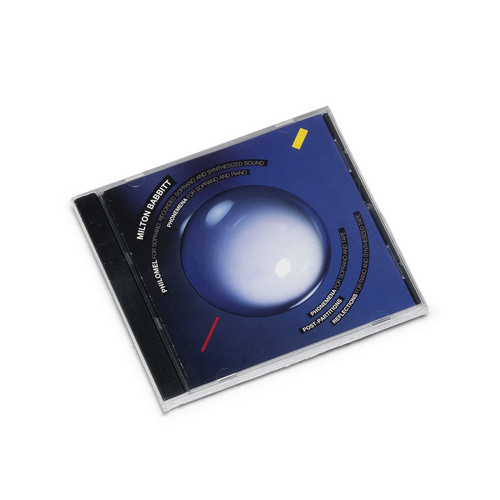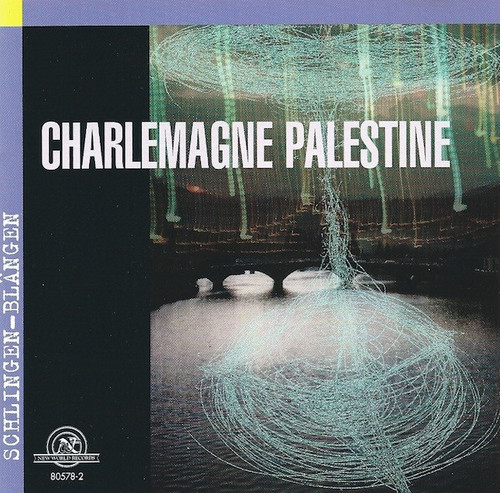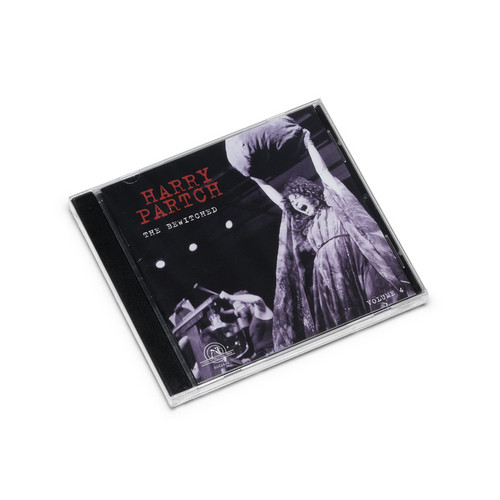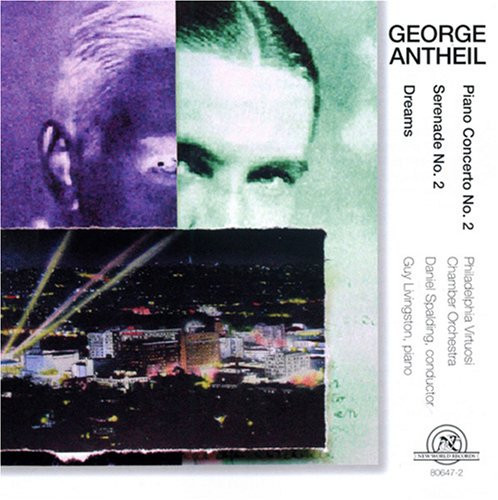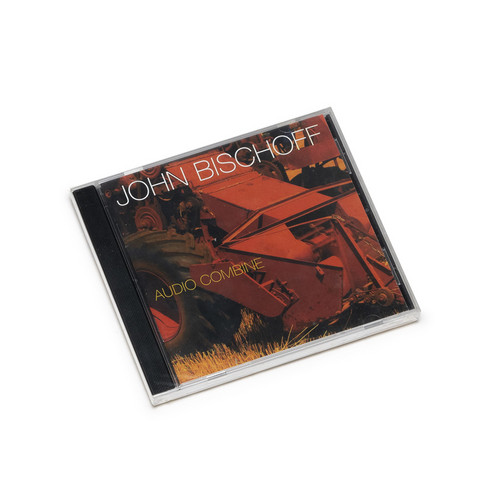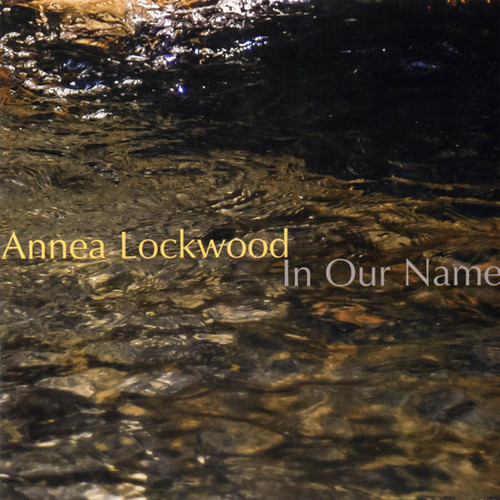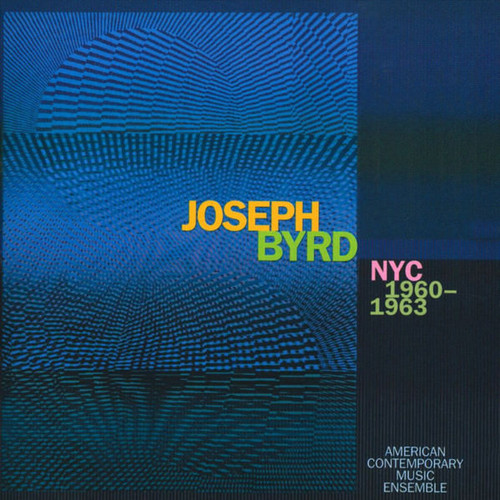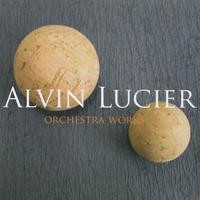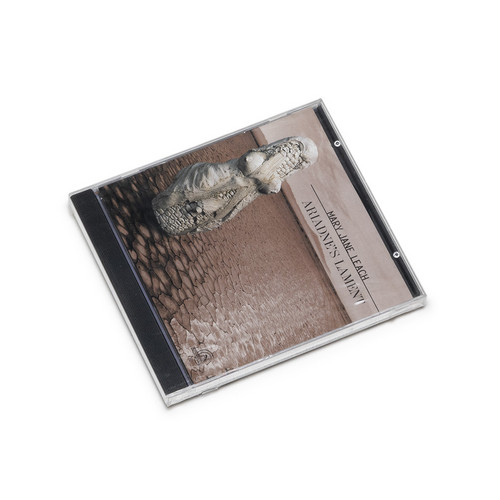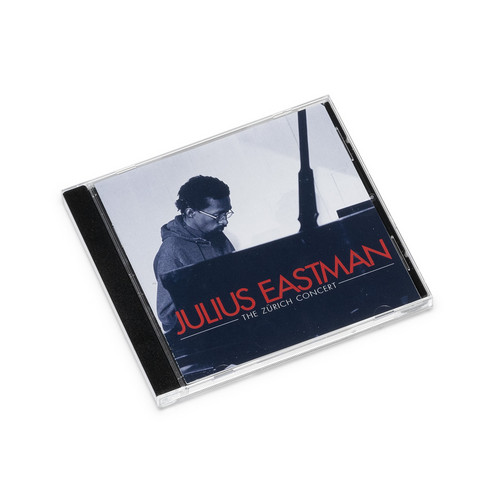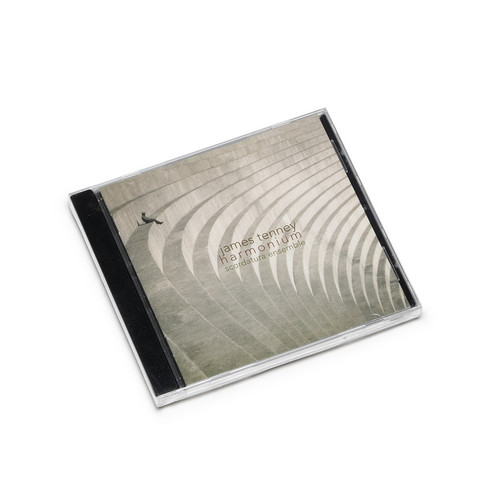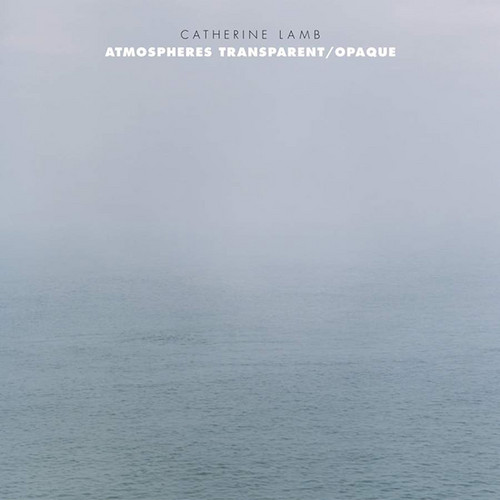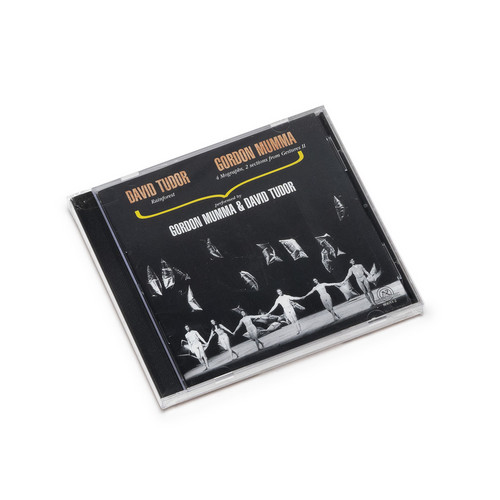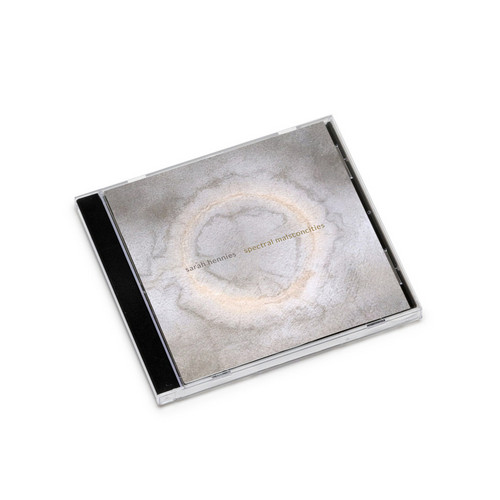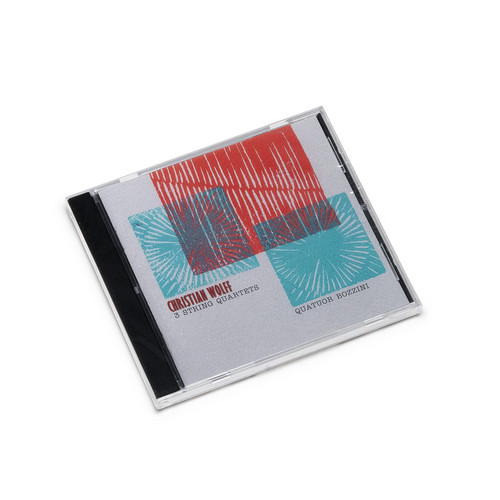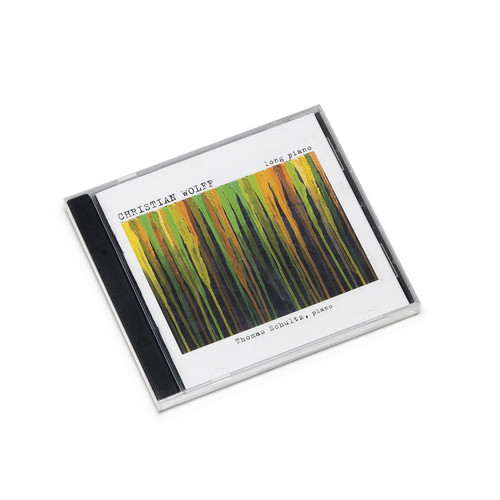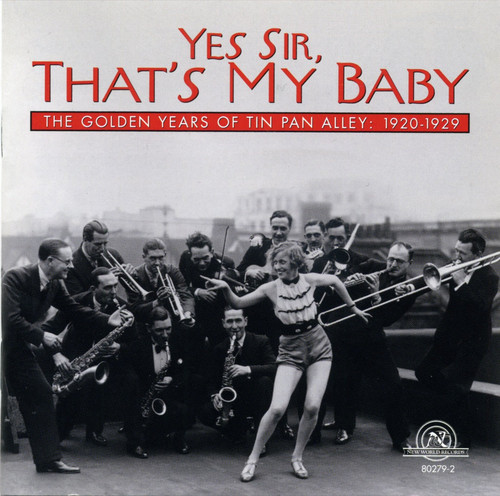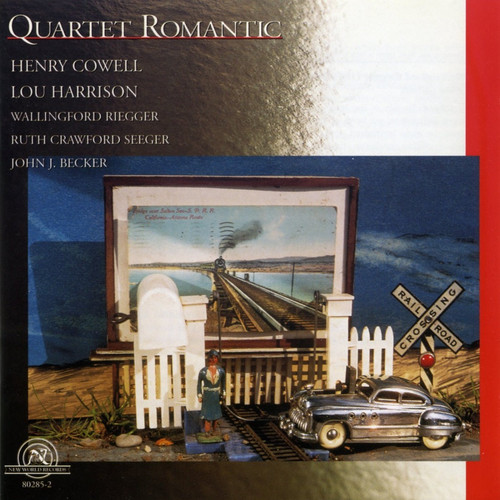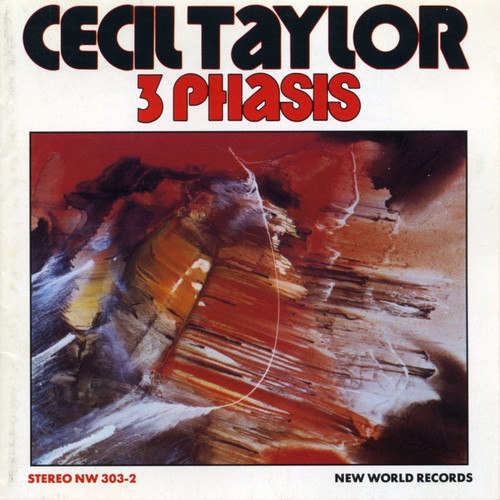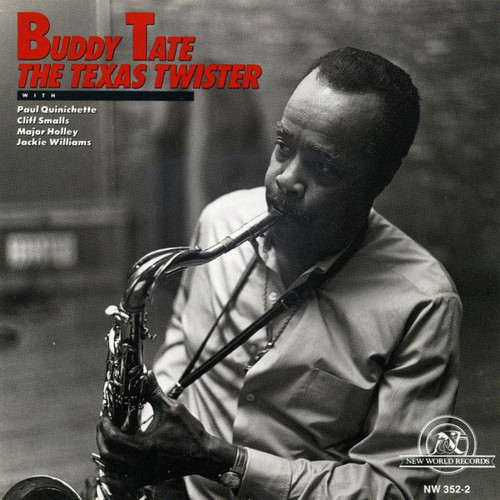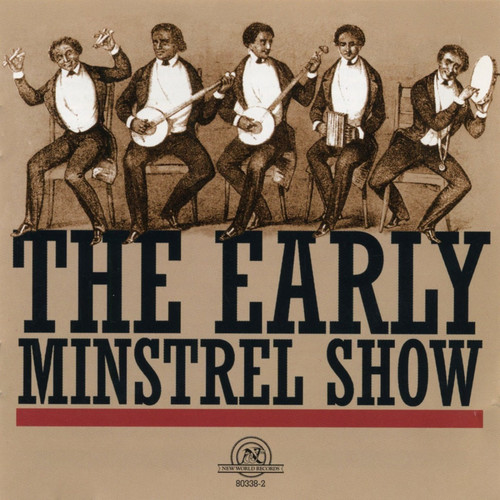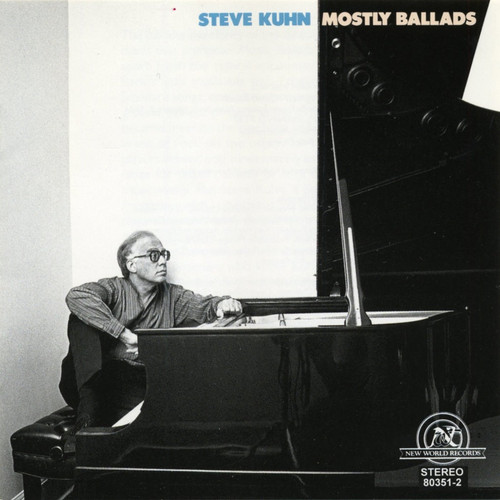Search (1 labels)
String Symphony / Sunday Morning / Eagles
Perhaps best known for his vast catalogue of vocal music-operas, song cycles, and choral works-Ned Rorem (b. 1923) also has composed three symphonies, four piano concertos, and an impressive array of other orchestral and chamber works. He received the 1976 Pulitzer Prize for the orchestral suite Air Music.
This collection features three of his orchestral works, String Symphony, Sunday Morning, and Eagles. String Symphony dates from 1985 and was completed in the space of just eight weeks. Mr. Ro…
Oh My Little Darling: Folk Song Types
This superb anthology of old ballads and other folk-song types comprises pre-war commercial and field recordings made in the rural Southeast, the part of the United States that most closely met the textbook definition of a "folk culture," in which culture was relatively homogeneous and customs were shared across class and ethnic lines. For this reason, this album focuses on the rural Southeast as a rich source of American folk life, ranging roughly from Virginia and Kentucky south to Alabama and…
Going To Kansas City
Jay McShann secured a lasting place in jazz history on April 30, 1941, when he became the first bandleader to usher Charlie Parker into a studio for a commercial recording session. For years, that was how McShann was remembered, if at all—as an early benefactor of the most influential figure in modern jazz. Shamefully, it took the jazz literati three decades to recognize Bird's old boss as a dynamic force himself.
McShann's advocacy of Parker was hardly his only distinction as a bandleader. A ri…
The Wind Demon And Other 19th Century Piano Music
This compendium of American piano music of the last half of the nineteenth-century is a potpourri of popular salon pieces and works of more serious aspirations. Together they conjure a characteristic portrait of the society for which they were composed, evoking images of frontier primitivism, brownstone-ballroom elegance, urban sophistication, as well as a more academically inclined formalism looking back to European models. Scintillating pianism by Ivan Davis and absolutely fascinating notes on…
Trio In C-Sharp Minor / Trio For Violin, Violoncello And Pianoforte
Leo Sowerby (1895-1968) lived for most of his career in Chicago where he spent more than 40 years on the faculty of the American Conservatory and nearly as long as organist-choirmaster of St. James Cathedral. His music can be described as "eclectic" in the best sense of the word.
German theory, French composition, English and American folk music, liturgical music and jazz (he toured with the Paul Whiteman Orchestra) all figure among the influences on his vast body of work. He produced more than…
Piano Concerto
The Piano Concerto was Peter Lieberson's first orchestral work and was, from the outset, conceived with Peter Serkin in mind as the soloist. He wrote it after a long period of immersion in the study of Tibetan Vajrayana Buddhism. Throughout what Lieberson regards as the "journey" of the Piano Concerto, the character of each movement changes dramatically, though the very tune that unfolds at the opening of the work returns in full just before the end. Each of the three movements reflects in a mus…
Assassin Reverie
** 2021 Stock ** Arte Quartett: Beat Hofstetter, soprano saxophone; Sascha Armbruster, alto saxophone; Andrea Formenti, tenor saxophone; Beat Kappeler, baritone saxophone Terry Riley, vocals, piano and harpsichord (Uncle Jard) A free spirit, maverick par excellence, creator of a personal compositional style that has spawned entire generations of epigones, Terry Riley (b 1935) embodies the best aspects of the American pioneer spirit, the positive and uncorrupted image of America (and California i…
Arthur Berger, Gilbert Kalish, Joel Krosnick, Christopher Oldfather, Joel Smirnoff, David Starobin, Members Of The Boehm Quintette
An Arthur Berger RetrospectiveFor over fifty years Arthur Berger's output consisted of sturdily crafted pieces that reflected the mixed lineage of Stravinsky, Schoenberg, and Copland. Born in 1912 and raised in the Bronx, he first studied at City College and New York University, later at the Longy School of Music and at Harvard. Berger completed his formal education with Nadia Boulanger in Paris. From 1939 to 1943 he taught at Mills College and Brooklyn College, then began writing music criticism for the New York Sun and, pr…
O, O, O, O, That Shakespeherian Rag
O,O,O,O, That Shakespeherian Rag collects six of the most important compositions from his relatively small body of work. By the late 50s Martirano had begun to freely incorporate elements of jazz and popular music. O,O,O,O, That Shakespeherian Rag(1959), one of his two magnum opuses, is a prime example of this musical synthesis—a serialist choral setting of passages from three Shakespeare plays, accompanied by a chamber orchestra that includes a jazz ensemble. Schoenberg meets bebop in a wild, i…
Piano Concerto / Variations For Orchestra
While a student at the Horace Mann School, Elliott Carter came to know Charles Ives. Carter continued his education at Harvard and then studied with Nadia Boulanger in Paris. Ives and Boulanger were formative influences: Carter's music draws on American experimentalism (Ives, Cowell, Crawford, Nancarrow, Varèse) and European modernism (Debussy, Stravinsky, the Viennese). Ever since he reached his stylistic maturity with the String Quartet No. 1 of 1951, Carter has continued to pursue an original…
Symphony No. 4 / Session I
William Bolcom was born on May 26, 1938, in Seattle, and trained at the University of Washington and Stanford University, as well as with Darius Milhaud. He has written four symphonies, concertos for piano and for violin, chamber and solo instrumental music, and the mammoth setting of the forty-six Songs of Innocence and of Experience by William Blake, nearly thirty years in the composing.
In the early 1960s Bolcom worked with improvisational theater groups. Between 1965 and 1967 he wrote four …
Music for Woodwinds
Through her novel approaches to texture and melody, German-American composer Johanna Magdalena Beyer (1888–1944) became one of the most distinctive modernist voices of the mid-20th century. Beyer was the first woman known to have composed for electric instruments (Music of the Spheres, 1938). Her compositions anticipate elements of minimalism, a movement that would manifest two decades after her passing. Beyer was long omitted from the written history of ultramodernism, but her activities as a c…
Earle Brown: Selected Works 1952- 1965
This long-awaited reissue of the CRI recording of Earle Brown’s (1926–2002) music is the best overview of his seminal early works. “It is obviously a great pleasure for me that Cri is re-releasing its 1974 recording of my work, and an even greater pleasure that I am able to add to the repertoire. The performance of Times Five and Novara still seem very fine representations of the works and are performed brilliantly by the Dutch musicians. December 1952 as realized by the late, brilliant pianist …
The Harry Partch Collection, Volume 3
The four works on this newly remastered CD are eloquent testimony to Harry Partch’s aesthetic of corporeality. The music he composed for The Dreamer That Remains, for Rotate the Body in All Its Planes, for Windsong, and for Water! Water!, was intended as only one component in the total artistic experience. In these works music joins with drama, with film, with dance, even with gymnastics, as integral parts of the composer’s vision..New World's The Harry Partch Collection, Vol. 3, as was the CRI …
Rational Melodies
I am particularly pleased, because the result is so different from the solo flute recording of Eberhard Blum and the solo clarinet recording of Roger Heaton. It is not just another interpretation, but a case where interpreters have added so much insight to the music that the music itself has grown. When I was composing this music around 1982, I really thought I was simply writing melodies, but now these little pieces, though remaining melodies, have become something much more, something I…
Form
Comet-like radiance, conviction, fervent intensity, penetrating thought on many levels of seriousness and humor, combined with breathtaking adventurousness and originality, marked the inner and outer life of Stefan Wolpe, as they do his compositions. -- Elliott Carter
Stefan Wolpe (1902-1972) is an acknowledged master of modern music whose oeuvre has had a lasting influence on both classical and jazz musicians. Though receptive to prevailing musical trends, Wolpe was an individualist who forg…
The New York Composers Orchestra: First Program in Standard Time
Acoustic jazz recording featuring Holcomb's eleven-minute title-track, Lenny Pickett's ten-minute Dance Music for Composer Orchestra, Elliott Sharp's eight-minute Skew and Horvitz's nine-minute Paper Money and an eleven-minute composition by Anthony Braxton.
Three Pieces in Polytempic Polymicrotonality
The author of these notes has spent his life explaining radical music, and the music on this disc may be the most radical I've ever written about. Peter Thoegersen (b. 1967) is not yet a name known to the music world; not for any lack of connection to other famous musicians, but because he came to composition late, and because his artistic aims are so broad and complex that they have taken years to evolve. His aesthetic is well defined, and he is upfront about having a name for it: "Polytempic P…
Powwow Songs — Music Of The Plains Indians
Produced and annotated by Charlotte Heth, a member of the Cherokee nation of Oklahoma and a noted ethnomusicologist.
This disc offers ceremonial and social music of Indians from the Great Plains. Although the styles of singing and drumming vary greatly in different regions and among different tribes, the forms of music are similar, enabling musicians from many tribes to perform together. Most of the music here is intertribal singing of what are now the Southern Plains Indians, primarily from Ok…
Ikon and other Early Works
This CD comprises the text-sound works (1974-1980) on which Ingram Marshall concentrated throughout the seventies and falls into two parts: the works from the Fragility Cycles period (Cries Upon the Mountains, SUNG, Sibelius in His Radio Corner, and IKON) and the earlier works (Cortez, Weather Report, and The Emperor’s Birthday).
“Cortez, Weather Report, and The Emperor’s Birthday
form a kind of trilogy representing my work with “text-sound” in the
early seventies. The techniques used to gener…
Brother, Can You Spare A Dime? (American Song During The Great Depression)
American society was much less homogeneous during the Great Depression (1929 - 1941) than it became after World War II. There were still quite sharply defined classes, divided along economic, geographic, and ethnic lines. Each group was affected by the Depression, but in different ways and to different degrees. Each had its own tradition of popular song, and this carefully compiled sampling of recordings from the thirties gives a vivid picture of how each fared and how it reacted to the almost u…
Loxodonta Africana
From 1977, seven tunes, five of them by Ricky Ford, the then 23-year-old tenor saxophonist and member of the Charles Mingus band and leader of the session. Accompanied by bassist extraordinaire Richard Davis and the great Dannie Richmond, Ford leads the band through mostly hard-swinging, straight-ahead compositions steeped in the jazz tradition but speaking a contemporary language -- a result of the distinctly audible influence of Mingus. Great compositions and strong improvising from the solois…
Los Angeles Philharmonic Orchestra, John Alden Carpenter, Henry F. Gilbert, Adolph Weiss, John Powell
Orchestral WorksIf diversity and independence are definitive American traits, it would be hard to find four roughly contemporaneous native composers more unmistakably American. Markedly different in personality, each going his own stubbornly separate way, each spoke his uniquely individual dialect. They were born in successive decades (the last four of the nineteenth century) in different regions, and they were even more diverse in their musical training, affinities, and styles, yet they managed to create music…
Anthony Philip Heinrich, Syracuse Symphony Orchestra, Christopher Keene, Louis Moreau Gottschalk, Anthony Und Joseph Paratore
The Ornithological Combat of Kings/Night in the TropicsHere are two extremely entertaining concoctions by two nineteenth-century American Romantics who wrote music on a grand scale. After a broadly lyrical first movement in the grand tradition of his friend and mentor Hector Berlioz, Gottschalk introduces, appropriately enough, a Cuban rumba into the second and final movement of his breezy south-of-the-border excursion, Night in the Tropics. The sources of Heinrich's musical style are in Haydn and to some extent Beethoven, but with the ornateness of…
The Birthday Party
On first hearing, the piano music of Peter Garland (b. 1952) creates a feeling of dislocation, then astonishment: It is so very different from the contemporary concert music we are familiar with. The composer's intent, his emotional directness is immediate -- despite the unusual sound world and different sense of time that these pieces exhibit. The three pieces on this CD, 'The Birthday Party' (2014), 'Blessingway' (2011-12) and 'Amulet' (After Roberto Bolaño) for 4 pianos (2010), are quite diff…
Winter Cantata, Other Works
Vincent Persichetti's choral music plays an important part role in his output. In many ways his Mass is an orthodox a cappella Mass, its Renaissance heritage reflected in its use of a Gregorian chant as the unifying theme, and in its reliance on imitative counterpoint as its chief developmental technique. His Winter Cantata, based on a collection of haiku, is scored for women's chorus, flute, and marimba. Without any overt musical references, the work is Japanese in spirit, largely as a result o…
Autonomous and dynamical systems
A relentless explorer, composer, performer and theorist, David Dunn (b 1953) uses electro-acoustic resources, voice, non-human living systems, as well as traditional instruments. A creator of text-sound compositions, environmental installations, works for radio and video, he has also written and published extensively. Underlying all his work is a common regard for music as a communicative source with a living world. Growing up in San Diego in the sixties and seventies, he encountered people lik…
A mist is a collection of points
Michael Pisaro (b. 1961) is a member of the Wandelweiser collective, an international organization of musicians which he has defined as 'a particular group of people who have been committed, over the long term, to sharing their work and working together.' Its members have shared an interest in John Cage and experimental music, and extended durations, indeterminacy, and silence have featured in many works they have made; but Michael Pisaro is quick to point out that the members of the colle…
Pioneers of Electronic Music
Works by Vladimir Ussachevsky, Otto Luening, Pril Smiley, Bülent Arel, Mario Davidovsky, Alice Shields . In 1950, the Columbia University Music Department requisitioned a tape recorder to use in teaching and for recording concerts. In 1951, the first tape recorder arrived, an Ampex 400, and Vladimir Ussachevsky, then a junior faculty member, was assigned a job that no one else wanted: the care of the tape recorder. This job was to have important consequences for Ussachevsky and the medium he dev…
Columbia- Princeton Electronic Music Center 1961- 1973
Works by Bülent Arel, Charles Dodge, Ingram Marshall, Ilhan Mimaroglu, Daria Semegen, Alice Shields. The Columbia-Princeton Electronic Music Center was the first electronic music center to be established in the United States. From 1959 to the late 1970s, it was one of the premiere sound facilities in the world. The vast majority of pieces composed at the Center - approximately three hundred - were composed during this period. Some have become classics of music history. This selection, draw…
The Complexity Of Distance
At the onset, we hear a single, heavily distorted power chord. The chord fades, and then we hear three more iterations of the chord in regular, pulsed attacks. To some, especially fans of metal and its many subgenres, this sound is welcoming and familiar. To others, this sound is surprising, perhaps arresting—an unexpected opening from a composer known for music of quiet, prolonged stillness. This chord and its four attacks signal the opening of The Complexity of Distance, a 58-minute collabora…
Brian Baumbusch: Chemistry for Gamelan and String Quartet
Chemistry for Gamelan and String Quartet is the culmination of a long-term collaboration between the JACK Quartet and composer and instrument builder Brian Baumbusch (b. 1987). Over the past ten years, Baumbusch has designed and built two separate sets of “American gamelan” instruments. Based on various instruments from the Balinese gamelan tradition, these instruments depart in innovative ways from Indonesian traditions based on their unique tuning, inspired in part by the tuning theories publi…
I'm On My Journey Home: Vocal Styles And Resources In Folk Music
This album is a loosely structured survey of different types of vocal styles and resources found in rural Anglo-American lower- and middle-class communities. Some of the modes of performance, such as hollering and solo ballad singing, have almost died out; others, such as Sacred Harp singing, formal duet singing, and square-dance calling, continue to flourish. The album is divided into three major sections: a survey of nonstandard vocal effects that shows how much music infuses the everyday comm…
Hidden Sparks
This recording contains four works for violin by four disparate American composers with unique conceptions of the instrument and its possibilities, technical and expressive. Elliott Carter's Riconoscenza is a short work for unaccompanied violin imbued with a craggy, rough-hewn grandeur and arching melodic lines characteristic of his mature music. Fantasy for Violin and Piano by Ralph Shapey (b. 1921) typifies the unusual blend of astringency and lyricism of his dense, passionate and deeply rewa…
Rainforest + 4 mograph
This historic recording features the first-ever release of the two earliest surviving recordings of David Tudor's seminal work, Rainforest. Sandwiched in between are six keyboard works by Gordon Mumma in recordings featuring the composer and his close collaborator, Tudor. Together, these works constitute a fascinating and historically important document of the 1960s avant-garde in America. In early 1968, Merce Cunningham created a new dance whose apparent impetus was Colin Turnbull's The Fore…
The Open Air Meeting
Muhal Richard Abrams: piano; Marty Ehrlich: alto saxophone, clarinet.
This disc is taken from a live recording of an open air concert
which took place August 11, 1996 at the Brooklyn Museum in New York.
This duet concert was, on one level, a meeting between two of the
seminal jazz innovators of their respective generations. The nuanced and
subtle interchange of ideas between these two great musicians-as they
challenge and provoke each other to explore new musical ground-is
enthralling thr…
Zummo with an X
Peter Zummo (born 1948) is an American composer and musician. He plays the trombone, valve trombone, euphonium, synthesizer, other electronic instruments, and also sings. He is associated with the post-minimalist and Downtown aesthetics, and he describes his music as "minimalism plus a whole lot more." "I first discovered Peter Zummo when I first discovered Arthur Russell. I kept hearing THAT trombone sound throughout Arthur's music and through scanning through various label credits made the con…
Philomel
Compositions performed by Bethany Beardslee and Lynne Weber (sopranos), Jerry Kudern and Robert Miller (pianos). The four works on this recording span a period of a decade and are among the best of Milton Babbitt’s output, tape and otherwise. Philomel, for soprano, recorded soprano, and synthesized sound, is one of the undisputed classics of electroacoustic music and this is its definitive recording. Two versions of Phonemena —one for soprano and piano, the other for soprano and tape— another vi…
Schlingen Blängen
Schlingen Blängen is an invaluable addition to the slender but precious discography of Charlemagne Palestine, one of the legendary figures of the amazingly fertile New York and West Coast experimental music/art scene of the sixties and seventies. He is considered to be a seminal figure of early minimalism-as important as his better-documented contemporaries. His performances on the giant bells at St. Thomas Church and his evening-length Bösendorfer shows are still spoken of with awe by those who…
The Harry Partch Collection, Volume 4
Meticulously remastered from the original mono master tapes! The Bewitched was Harry Partch’s first work solely intended for dance (and mime-dance at that; he was not overly enamored in his lifetime of so-called “modern dance”). Drawing heavily from his deep affection for the music-theatrical performance traditions of Greek theater, as well as those from Africa, Bali, and Chinese opera, Partch conceived of a contemporary American music ritual-theater where musicians not only play, but also funct…
George Antheil: Piano Concerto No. 2
The Piano Concerto No. 2 is an experiment in classical form. The work contains the same sudden juxtapositions and abrupt contrasts of mood as his futurist music. But the excesses of his recent Ballet mécanique are compensated for by an almost spare, baroque orchestration and motifs that draw on Bach as much as on Stravinsky. In three movements, George Antheil employs a more restrained but still exuberant style. The beautifully meditative slow movement is followed by a virtuosic and compelling to…
Audio Combine
restocked: The music comprising John Bischoff’s new CD ‘Audio Combine’, just released on New World Records, is beautiful, fascinating, thoroughly enjoyable. Philip Perkins’s engineering and production values are superb.The five tracks on the disc are diverse, representing Bischoff compositions from 2004 to mid-2011. The third track ‘Local Color’ evokes traditional chinese zhong bells, but also especially calls into question the ‘who’ of music performance [in asmuch as some of the bells are compu…
In Our Name
Pioneering American electronic music composer Annea Lockwood presents "In Our Name", based upon two of the many poems written in Guantánamo by detainees, with no expectation that they could ever be heard "outside the wire". Many poems were confiscated by the Pentagon before the writers' lawyers could read them and remain locked away, the Pentagon "arguing that poetry 'presents a special risk' to national security because of its 'content and format.'" Marc Falkoff writes, in his introduction to t…
Nyc 1960-1963
Recordings of works by Joseph Byrd, student of Morton Feldman and John Cage and frontman for The United States Of America, are finally available by the American Contemporary Music Ensemble via New World Records.Byrd collaborated with a number of Fluxus artists in the 1960s, and also formed Joe Byrd And The Field Hippies, recording psych-rock album The American Metaphysical Circus in 1969. This release, Joseph Byrd NYC 1960–1963, recorded by contemporary music ensemble ACME, includes new recordin…
Orchestral Works
Orchestra Works brings together three groundbreaking compositions by Alvin Lucier, each redefining the orchestral tradition through radical explorations of sound, space, and perception. Performed by the Janáček Philharmonic Orchestra under conductors Christian Arming, Petr Kotik, and Zsolt Nagy, with cellist Charles Curtis, this album showcases Lucier’s singular ability to transform familiar instruments into vehicles for profound auditory discovery.
Lucier’s Diamonds uses split orchestras to “dr…
Ariadne's Lament
Mary Jane Leach (b 1949) explores the physicality of sound, working very carefully with the timbres of instruments, creating combination, difference, and interference tones. The use of sound phenomena, however, is only a means to an end, the ultimate goal being musicality.
Early music, with its imitative polyphony and modal harmonies, is the primary source of inspiration for the compositions on this disc, four of which are part of an ongoing project focusing on the myth of Ariadne-Ariadnes Lam…
The Zürich Concert
Just when you think you are grasping the breadth and quality of the music of Julius Eastman (1940 - 1990), a recording such as Julius Eastman: The Zürich Concert shows up, and you have to go back and reassess his work and wonder what will show up next. This recording is from a 1980 solo seventy-minute improvisatory concert in Zürich, a cherished cassette made by a friend of Eastman's, who recently realized its uniqueness and decided that he should share it. The Zürich Concert was performed on Oc…
Harmonium
Just Asked whether he would describe his music as “Sound for the sake of sound,” James Tenney (1934–2006) replied, “It’s sound for the sake of perceptual insight—some kind of perceptual revelation.” This release aptly demonstrates Tenney’s deep exploratory fascination with the nature and potentialities of aural perception. His attraction to these topics was simultaneously intellectual and sensuous, and its musical products at once invite both sustained reflection and the most immediate of corpor…
Atmospheres Transparent / Opaque
This recording is an excellent introduction to the distinctive sound world of Catherine Lamb (b. 1982), who studied with James Tenney and Michael Pisaro, in that it documents a recent large-scale piece that epitomizes her compositional aesthetic, Prisma Interius IX (2018), and was recorded under the composer's supervision."I have been attempting to describe, in more elemental terms, the perceptual roles between musicians who are activating interactions in harmonic space. Overlays Transparent/Opa…
Music of David Tudor and Gordon Mumma
This historic recording features the first-ever release of the two earliest surviving recordings of David Tudor's seminal work, Rainforest. Sandwiched in between are six keyboard works by Gordon Mumma in recordings featuring the composer and his close collaborator, Tudor. Together, these works constitute a fascinating and historically important document of the 1960s avant-garde in America.
In early 1968, Merce Cunningham created a new dance whose apparent impetus was Colin Turnbull's The Forest …
Spectral Malsconcities
In modern experimental music, and especially among a number of musician-composers emerging in America during the Sixties, a fixation on process and awareness became a structural hallmark, exploring the gradual change of sonic materials, built environments, and the human body. Though much maligned as a term by its practitioners, figures like Steve Reich, La Monte Young, Philip Glass, and Terry Riley were among these 'minimal' composers; askew of them were electroacoustic explorers like Alvin Luci…
3 String Quartets
Starting with his music of the 1960s and early 1970s, with works such as For 1, 2 or 3 People (1964), the Prose Collection (1968–71), and Changing the System (1974), Christian Wolff (b. 1934) quietly re-invented chamber music. He created music in which the activities of the performers— timing, cueing, assembling and selecting materials—were foregrounded. Although to some extent these activities were always a part of classical music, Wolff opened them up for creative decision-making by the musici…
Long Piano
The melodic and, in the case of the solo piano music, timbral materials from which Christian Wolff's (b 1934) music is made are rarely unusual; these are ordinary, everyday things. However, Wolff's rhythmic invention is of great range and variety: complex polyrhythms, speech-like-rhythms, the music flowing at a freely fluctuating rate or proceeding in a plain, straightforward manner, silences. This mix of unusual and ordinary results in a music unlike any other. And, in a piece of such length as…
Yes Sir, That's My Baby (The Golden Years Of Tin Pan Alley 1920-1929)
The naive romanticism of the Jazz Age, when, as F. Scott Fitzgerald saw it, "people danced in a champagne haze on the rooftop of the world," was nowhere more clearly reflected than in America's popular music of the 1920s. The banal optimism, the desperate gaiety, the tinsel pretentiousness, the childish excitement, and the innocent beauty of the songs between the end of World War I and the Depression demonstrate how sweet and sad and silly a time it was. The subject matter of the love songs, the…
Quartet Romantic
The generation of American composers who came of age in the 1920s are now generally acknowledged as seminal figures in the creation of a truly indigenous American art music. Quartet Romantic makes available for the first time on CD several important chamber works by four of these figures - Henry Cowell, Ruth Crawford Seeger, Wallingford Riegger, and John Becker - as well as an early work by Cowell's most famous pupil, Lou Harrison.
3 Phasis
3 Phasis is the companion disc to the Cecil Taylor Unit, both set down over four miraculous days in April 1978. It too is a testament to the perfectionism and unpredictability that are hallmarks of Taylor's music. As always, he is the instigator and barometer of the torrents of energy channeled through his able and sympathetic collaborators. This is music of a fierce and uncompromising beauty which sweeps all before it.
The Texas Twister
The Texas Twister is a relaxed, gently probing session; its several highlights begin with the title selection, a thirty-two-bar riff confection with a characteristically willful opening solo by Buddy Tate. His best playing on the date is heard on "Talk of the Town," a memorable example of his ability to invest a ballad with emotional generosity, melodic invention, and playfully rhythmic finesse, and on "Topsy," in which he follows the piano solo with a plaintive, wailing, yet impeccably shaped s…
The Early Minstrel Show
The racist stereotyping of blacks in the minstrel shows that enjoyed such enormous popularity during the latter half of the nineteenth century might be considered reason enough not to resurrect this material, but anything with so much cultural impact deserves serious study. We need to listen to this material in its historical perspective and understand that the study of it is not a validation of its racist sentiments. This recording attempts to recreate the music of a typical minstrel show of th…
Mostly Ballads
The fullness and clarity of the six solos and six duets that comprise Mostly Ballads set them apart from the typical encounter of post-Parker jazz musicians with "the tradition." Standard songs, once the improviser's training ground, fell out of favor in the sixties as jazz became freer on the one hand and more tolerant of rock on the other; far too many players viewed pop tunes merely as opportunities for broad comedy or rote displays of musicianship. But Steve Kuhn, a post-Parker improviser wi…
Sonata No. 2 ( "Concord, Mass., 1840-1860") - Sonata
“This is not a nice sonata for a nice piano player,” wrote Charles Ives about his most famous work, “but something the writer had long been thinking about.”
All four movements were programmatically conceived around figures in the Transcendentalist movement (c. 1936-1860) in Concord, Massachusetts. The “Emerson” movement had begun as a piano concerto, the soloist representing Ralph Waldo Emerson, and the orchestra, the masses listen to him; “Hawthorne” was conceived for “a piano or a dozen pianos…
